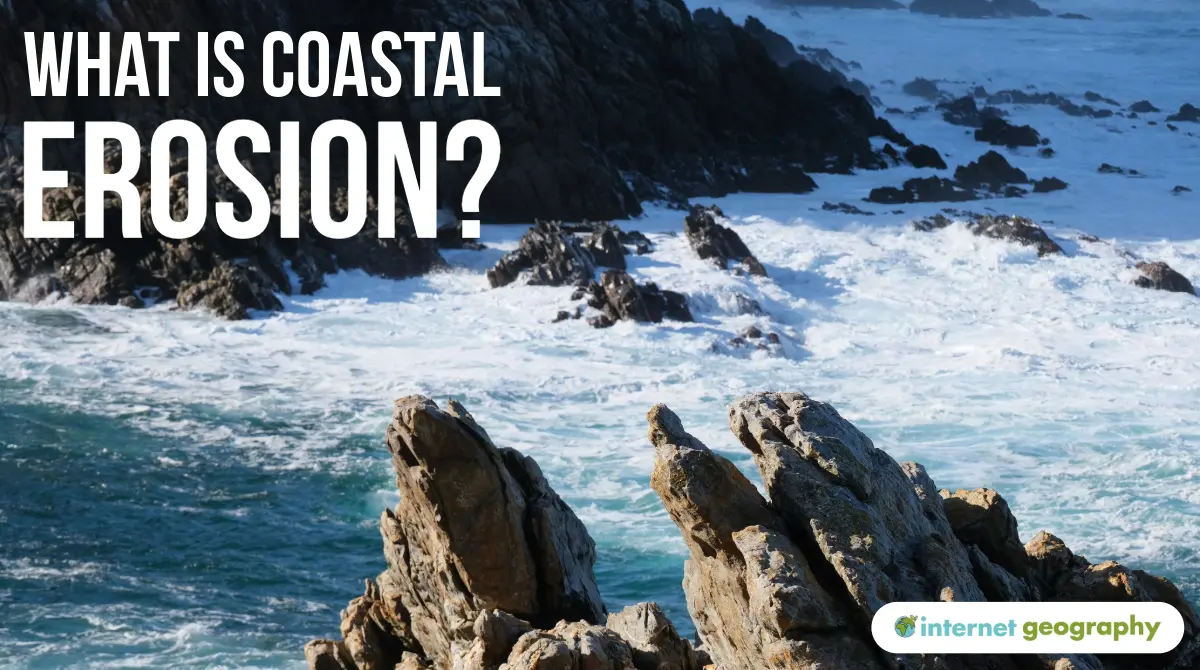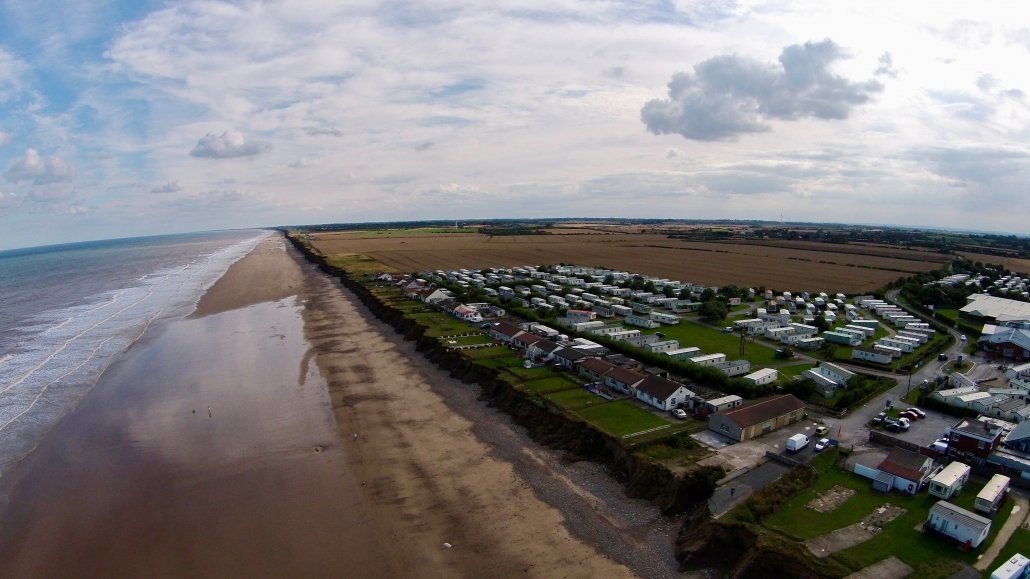What is coastal erosion?
Coastal erosion is the wearing away of land by the sea, often involving destructive waves that erode the coast (though constructive waves also contribute to coastal erosion).
What are the processes of coastal erosion?
There are four main processes of coastal erosion. These are corrasion, abrasion, hydraulic action and attrition.
Corrasion is when destructive waves pick up beach material (e.g. pebbles) and hurl them at the base of a cliff. Over time, this can loosen cliff material, forming a wave-cut notch.
Abrasion occurs as breaking waves, concentrated between the high and low watermarks, which contain sand and larger fragments that wear away the base of a cliff or headland. It is commonly known as the sandpaper effect. This process is widespread in high-energy storm conditions.
The video below shows abrasion in action at Flamborough on the Holderness Coast.
Waves hitting the base of a cliff cause air to be compressed in the cracks, joints, and folds of bedding planes, resulting in repeated changes in air pressure. As air rushes out of the cliff when the wave retreats, it leads to an explosive effect as pressure is released. This process is supported further by the weakening effect of weathering. The material breaks off cliffs, sometimes in huge chunks. This process is known as hydraulic action.
Attrition is when waves cause rocks and pebbles to bump into each other and break up.
What factors affect the rate of coastal erosion?
Coastal erosion is most significant when:
- waves have a large fetch, e.g. the south-west coast has an 8000 kilometre fetch across the Atlantic Ocean;
- Strong winds blow for a long time, creating destructive waves;
- An area of coastline has no beach to buffer the waves;
- The cliff material is soft, e.g. soft boulder clay along the Holderness Coast means it experiences the highest rate of erosion in Europe;
- Cliffs made from rock have many joints.
- A headland sticks out into the sea, and waves converge on it (wave refraction).


